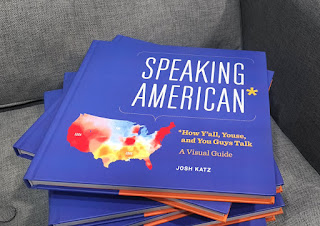PROMISING YOUNG WOMAN (2020)
Written and directed by Emerald Fennell
Focus Features, 113 minutes, R (sexual situations, drug use, violence)
★★★
This one could be subtitled “How Cassie Lost Her Mojo.” On paper, Cassandra Thomas (Carey Mulligan) has it all. She’s brainy, quick-thinking, beautiful, and comes from a good family. So why is she a 30-year-old medical school dropout, living at home, with no partner, and working in a dead-end job as a barista?
Promising Young Woman tackles the serious social problem of spirited girls and young women hollowed out by trauma. In Cassie’s case, it’s not she who was victimized, rather her best friend Nina. We never meet Nina, but we know that something bad happened to her that so scarred Cassie that she chucked her promise and withdrew into a cynical shell. Her parents (Clancy Brown and Jennifer Coolidge) can’t crack that shell, and even her boss Gail (Laverne Cox), the closest thing she has to a friend, finds her perplexing. Nor do they know about her extracurricular activities. Cassie goes to clubs and bars, feigns extreme drunkenness, goes home with strange men, and scares the crap out of them when they discover she’s stone-cold sober and psycho-like menacing.
From this we infer that Cassie fancies herself an avenging angel. Promising Young Woman deals with a he said/she said situation in which “she” isn’t believed. Not by a female law school dean (Connie Britton), not by men Cassie once considered friends, not by her female colleagues, and certainly not by the attorney (Alfred Molina) who eviscerated the victim and made her look like the little girl who cried wolf. Some of you might recognize the name Cassandra from Greek mythology. She was the Trojan prophetess whose curse was that she always told the truth, but no one believed her. Cassie has a tale to tell, but no one wants to hear it.
Maybe Cassie should do as another character (Molly Shannon) tells her to do: move on. When she meets the quirky, take-it-slow Dr. Ryan Cooper (Bo Burnham), she starts to do exactly that. But when she hears that Dr. Al Monroe (Chris Lowell) is getting married, things go very, very wrong. Cassandra morphs into Pandora and opens dangerous boxes filled with things that she would have been better off not knowing.
Mulligan was nominated for a Best Actress Oscar for her role as Cassie. She didn’t win, but she certainly deserved to be considered. She strikes two contradictory chords. When she dons her nighttime warrior princess battle paints to haunt bars, she’s slutty and crazed; when she moves through the day, she is alluring and has just enough radiance peeking through that everyone wants to help her out of her rut. Maybe the real Cassie consists of both sides, but Mulligan keeps us guessing which part of her will prevail. Burnham also walks a thin line. In his case, we wonder if he’s an adorable goofball, or a man who is too good to be true. Promising Young Woman is essentially a two-person dance in which the rest of the cast contribute flesh-out-the-script cameos.
Would that the film matched its central performances. This is 35-year-year-old Emerald Fennell’s directorial debut and she has a good-but-not-great grasp on her task. Aspects of the story, central mystery, and lead performances are strong, but the total package is a neither fish nor fowl production that ultimately tantalizes but disappoints. I’m being literal about its essential lack of identity. You will see Promising Young Woman labeled as a feminist movie, a thriller, a drama, and a black comedy. It has dimensions of each, but let me ask this question. If you tried to make a mash of The Brave One, 9 to 5, Hard Candy, and the Girl with the Dragon Tattoo, what would it look like? And what if I asked you to add elements of Thelma and Louise and Joker?
Promising Young Woman is too good to dismiss, but you’d have to stretch the definition to call it feminist, rachet the fear factor to label it a thriller, smooth out its tone for it to be a drama, and the subject matter doesn’t lend itself to laughter. I’d add that lord knows men have a lot to answer for, but I’m not convinced that replacing stereotypes against women with those directed against men is much more than polishing a different boilerplate.
Rob Weir





